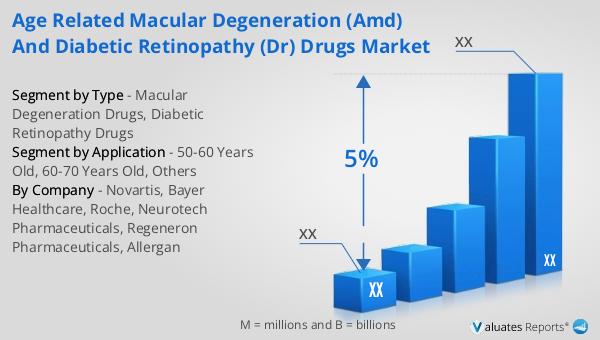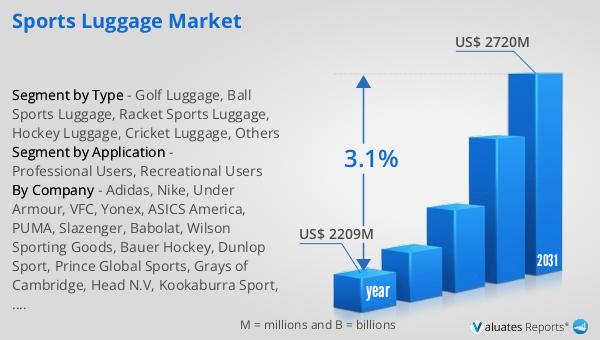What is Global Age Related Macular Degeneration (AMD) and Diabetic Retinopathy (DR) Drugs Market?
The Global Age-Related Macular Degeneration (AMD) and Diabetic Retinopathy (DR) Drugs Market is a specialized segment within the pharmaceutical industry focused on developing and distributing medications to treat two prevalent eye conditions: age-related macular degeneration and diabetic retinopathy. AMD is a leading cause of vision loss among people aged 50 and older, characterized by damage to the macula, the part of the eye responsible for sharp, central vision. Diabetic retinopathy, on the other hand, is a complication of diabetes that affects the eyes, resulting from damage to the blood vessels of the light-sensitive tissue at the back of the eye (retina). The market for these drugs is driven by the increasing prevalence of these conditions, largely due to an aging global population and the rising incidence of diabetes. Pharmaceutical companies are investing heavily in research and development to create more effective treatments, including anti-VEGF (vascular endothelial growth factor) therapies, corticosteroids, and other innovative solutions. The market is characterized by a mix of well-established drugs and emerging therapies, with ongoing clinical trials and regulatory approvals shaping its future landscape. As awareness of these conditions grows, so does the demand for effective treatments, making this market a critical area of focus for healthcare providers and pharmaceutical companies alike.

Macular Degeneration Drugs, Diabetic Retinopathy Drugs in the Global Age Related Macular Degeneration (AMD) and Diabetic Retinopathy (DR) Drugs Market:
Macular degeneration drugs are primarily designed to slow the progression of age-related macular degeneration (AMD) and, in some cases, improve vision. The most common form of AMD is the "dry" type, which progresses slowly and is characterized by the thinning of the macula. However, the "wet" type, though less common, is more severe and can lead to rapid vision loss. The primary treatment for wet AMD involves the use of anti-VEGF drugs, which work by inhibiting the growth of abnormal blood vessels in the retina. These drugs, such as ranibizumab (Lucentis) and aflibercept (Eylea), are administered through injections into the eye and have been shown to significantly improve vision in many patients. In addition to anti-VEGF therapies, researchers are exploring other treatment options, including gene therapy and stem cell therapy, to address both forms of AMD. On the other hand, diabetic retinopathy drugs aim to manage and treat the complications arising from diabetes-related damage to the retina. The primary goal is to prevent further vision loss and, where possible, restore some degree of sight. Like AMD, anti-VEGF drugs play a crucial role in treating diabetic retinopathy by reducing macular edema and inhibiting abnormal blood vessel growth. Corticosteroids, such as dexamethasone implants, are also used to reduce inflammation and swelling in the retina. Additionally, laser therapy and vitrectomy surgery are sometimes employed in conjunction with drug treatments to manage more severe cases. The global market for these drugs is expanding as the prevalence of diabetes continues to rise, particularly in developing countries where lifestyle changes have led to increased rates of the disease. Pharmaceutical companies are actively pursuing new drug formulations and delivery methods to enhance the efficacy and convenience of treatments for both AMD and diabetic retinopathy. The development of sustained-release drug delivery systems, for example, aims to reduce the frequency of injections required, improving patient compliance and outcomes. As the market evolves, collaborations between pharmaceutical companies, research institutions, and healthcare providers are essential to advancing treatment options and improving the quality of life for patients affected by these debilitating eye conditions.
50-60 Years Old, 60-70 Years Old, Others in the Global Age Related Macular Degeneration (AMD) and Diabetic Retinopathy (DR) Drugs Market:
The usage of Global Age-Related Macular Degeneration (AMD) and Diabetic Retinopathy (DR) Drugs Market varies across different age groups, reflecting the prevalence and progression of these conditions. For individuals aged 50-60 years, the focus is often on early detection and intervention. At this stage, many patients may be in the early stages of AMD or diabetic retinopathy, where lifestyle modifications and regular monitoring play a crucial role in managing the conditions. The use of supplements, such as those containing antioxidants and zinc, is common to support eye health and potentially slow the progression of AMD. For diabetic retinopathy, maintaining good blood sugar control is essential, and patients may be prescribed medications to manage their diabetes alongside specific eye treatments. As individuals move into the 60-70 years age bracket, the likelihood of experiencing more advanced stages of AMD and diabetic retinopathy increases. In this age group, the use of anti-VEGF injections becomes more prevalent, particularly for those with wet AMD or significant diabetic macular edema. Regular eye examinations are critical to monitor the progression of these conditions and adjust treatment plans accordingly. Patients may also require more frequent interventions, such as laser therapy or corticosteroid injections, to manage symptoms and prevent further vision loss. For those in the "Others" category, which includes individuals over 70 years old and those with more complex health profiles, the management of AMD and diabetic retinopathy often involves a multidisciplinary approach. This age group may face additional challenges, such as comorbidities and reduced mobility, which can impact treatment adherence and outcomes. Healthcare providers may need to coordinate care across multiple specialties to address the broader health needs of these patients. In some cases, advanced therapies, such as gene therapy or surgical interventions, may be considered to address severe vision impairment. The goal across all age groups is to preserve vision and maintain quality of life, with treatment plans tailored to the individual's specific needs and health status. As the global population continues to age, the demand for effective treatments for AMD and diabetic retinopathy is expected to grow, highlighting the importance of ongoing research and innovation in this field.
Global Age Related Macular Degeneration (AMD) and Diabetic Retinopathy (DR) Drugs Market Outlook:
The outlook for the Global Age-Related Macular Degeneration (AMD) and Diabetic Retinopathy (DR) Drugs Market can be contextualized within the broader pharmaceutical industry trends. In 2022, the global pharmaceutical market was valued at approximately 1,475 billion USD, with an anticipated compound annual growth rate (CAGR) of 5% over the next six years. This growth is indicative of the increasing demand for pharmaceutical products across various therapeutic areas, including ophthalmology. In comparison, the chemical drug market, a subset of the broader pharmaceutical industry, was projected to grow from 1,005 billion USD in 2018 to 1,094 billion USD by 2022. This growth trajectory underscores the expanding need for chemical-based therapies, which include many of the drugs used to treat AMD and diabetic retinopathy. The increasing prevalence of these eye conditions, driven by an aging population and rising diabetes rates, is a significant factor contributing to the growth of this market segment. Pharmaceutical companies are investing in research and development to create more effective and convenient treatment options, such as sustained-release drug delivery systems and novel therapeutic agents. As the market continues to evolve, collaborations between industry stakeholders, including pharmaceutical companies, research institutions, and healthcare providers, will be crucial in advancing treatment options and improving patient outcomes. The focus on innovation and patient-centric care is expected to drive the development of new therapies and enhance the overall effectiveness of treatments for AMD and diabetic retinopathy.
| Report Metric | Details |
| Report Name | Age Related Macular Degeneration (AMD) and Diabetic Retinopathy (DR) Drugs Market |
| CAGR | 5% |
| Segment by Type |
|
| Segment by Application |
|
| Consumption by Region |
|
| By Company | Novartis, Bayer Healthcare, Roche, Neurotech Pharmaceuticals, Regeneron Pharmaceuticals, Allergan |
| Forecast units | USD million in value |
| Report coverage | Revenue and volume forecast, company share, competitive landscape, growth factors and trends |
